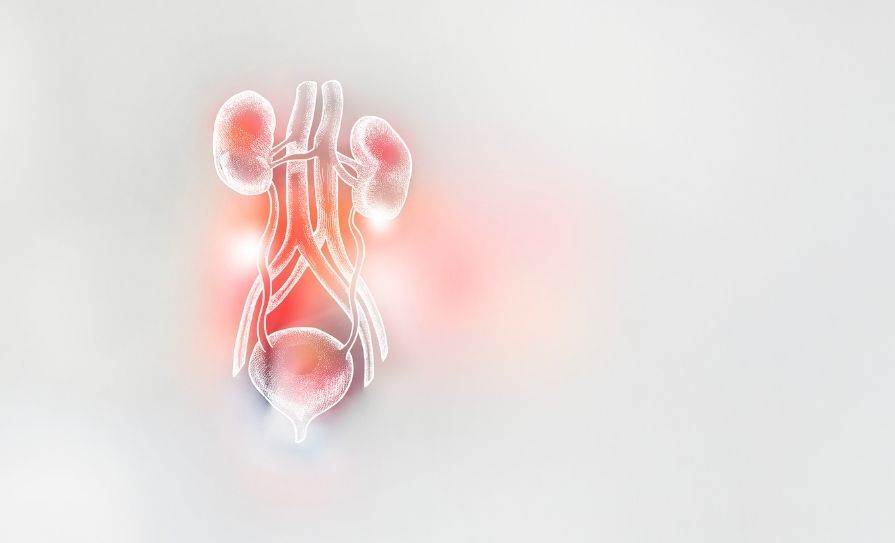Introduction
Influenza is a highly contagious viral infection that affects both the upper and lower respiratory tract. Influenza is caused by a wide spectrum of influenza viruses. Influenza viruses are transmitted through respiratory droplets that are expelled from the respiratory system. These viruses can also live on surfaces and be transmitted in this way. Influenza can be transmitted before symptoms appear and until up to seven days after infection. There are four classes of influenza viruses: A, B, C, and D. Type A and B are the most common causes of seasonal influenza. Influenza can lead to mild-to-severe illness and can sometimes result in hospitalisation or death. Influenza is a global health concern with seasonal outbreaks occurring primarily in the winter months in temperate regions. The World Health Organisation (WHO) estimates that there are approximately one billion cases of influenza globally each year, with up to five million cases of severe illness and up to 650,000 deaths.
All age groups can be affected by influenza, but certain groups are more at risk than others. Healthcare workers are at a higher risk of influenza virus infection due to increased exposure and are at risk of spreading the virus to other individuals. Those at a greater risk of disease include:
- Older individuals
- Children under five years of age
- Pregnant women
- Individuals with chronic medical conditions including cardiovascular, renal, pulmonary, hepatic, or metabolic disease
- Immunosuppressed individuals, either due to disease or treatment.
Presentation
Influenza is an acute disease that targets the respiratory system and causes inflammation. Symptoms usually begin approximately two days after infection. The disease is usually self-limiting in most healthy individuals and acute symptoms can persist for seven-to-10 days. Symptoms of influenza include:
- Sudden onset of fever
- Cough
- Headache
- Muscle and joint pain
- Malaise
- Fatigue
- Sore throat
- Gastrointestinal symptoms such as nausea, vomiting, and diarrhoea, particularly in children.
Most people will recover from fever and other symptoms within 10 days without medical attention, but the cough can often persist for longer than two weeks. Severe complications can arise within 48 hours from onset of symptoms and can include primary viral pneumonia, secondary bacterial pneumonia, sepsis, and haemorrhagic bronchitis. Furthermore, influenza can worsen symptoms of chronic diseases and lead to poor clinical outcomes. Hospitalisation and death can occur in high-risk individuals.
Prevention
Prevention is vital in reducing the spread of influenza. Measures including regular handwashing with soap, avoidance of touching the face, and covering coughs and sneezes with a tissue (and discarding the tissue immediately after use) are very effective in preventing the spread of influenza viruses. Cleaning surfaces that people regularly touch and improving ventilation can also be effective in this regard. Avoiding close contact with individuals when symptomatic is also an important practical measure which helps to reduce the transmission of influenza.
In high-risk patients, initiation of treatment should not be delayed until test results confirm diagnosis
Vaccination
Vaccination is the most effective method of preventing infection. Furthermore, vaccination reduces morbidity associated with influenza. Vaccinations contain weakened or inactive parts of a pathogen, which triggers an immune response in the body that will produce antibodies and offer protection if exposed to the pathogen at a later stage. The influenza vaccination should be administered annually given that antibodies decline over time and influenza strains can differ year-to-year. Timing of immunisation is important, with the recommendation for administration during September or October. Vaccination can continue for as long as influenza viruses are circulating. Vaccination generally reduces the risk of getting flu by 40 per cent to 60 per cent and can also reduce the intensity and duration of symptoms.
There are usually two vaccines available in Ireland: A quadrivalent influenza vaccine (QIV) and a live attenuated influenza vaccine (LAIV). The QIV is generally used for individuals over 18 years old and is administered via intramuscular injection. The LAIV is used for those aged two to 17 years old and is administered nasally. Mild adverse effects are possible after vaccination and can include fever, fatigue, soreness or swelling at injection site, body aches, and headaches. Nasal congestion is common after nasal administration. The adverse effects are generally self-limiting and usually resolve within 48 hours. Administration of paracetamol and rest are advised if adverse effects are experienced.
Diagnosis
The diagnosis of influenza is generally based on clinical symptoms and physical examination. Most healthy individuals recover without medical intervention and would not require laboratory testing. In high-risk patients, initiation of treatment should not be delayed until test results confirm diagnosis. Therefore, especially during influenza season, diagnosis can often be reached clinically. The gold standard for diagnosis is a polymerase chain reaction (PCR) test or taking a viral culture of throat secretions. However, these tests may take days to confirm diagnosis. These tests may be useful in cases to inform clinical action or public health interventions. Further investigations, including chest x-rays, may be obtained to exclude bacterial pneumonia.
Treatment
Influenza is self-limiting in most healthy individuals and therefore won’t require antiviral treatment, unless deemed necessary by a clinician. In these individuals, relief of severity, and duration of symptoms may be the treatment objective.
Antihistamines that are available over-the-counter (OTC), such as brompheniramine and chlorpheniramine, may reduce symptoms associated with nasal discharge and sneezing, but these are associated with drowsiness. Decongestants can be effective in reducing symptoms of rhinorrhoea, nasal congestion, and sneezing. Pseudoephedrine and phenylephrine are two decongestants that are available OTC for oral administration, while xylometazoline is available as a nasal spray. Adverse effects can include hypertension, agitation, tachycardia, and dysrhythmia. A wide range of cough medications are available to treat cough associated with influenza. Dextromethorphan is a non-opioid antitussive and can be effective in suppressing cough. Expectorants and mucolytics, such as carbocisteine and guaifenesin, can treat a productive cough by increasing the volume of sputum in the airway and decreasing the viscosity – promoting effective clearance of mucus. Codeine is an opioid antitussive and used to be the gold standard treatment for cough. However, it is no longer recommended for first-line treatment due to lack of evidence of efficacy and many adverse effects associated with it, including dependence, drowsiness, and constipation. Paracetamol and non-steroid anti-inflammatory drugs (NSAIDs) may provide analgesia for associated headaches and body aches. Additionally, self-care measures such as rest, hydration, nutrition, and avoiding smoking can also help to alleviate symptoms.
Antiviral treatment
Antiviral medication may be required to treat or prevent influenza infection, particularly in high-risk patients or during outbreaks in healthcare settings. Oseltamivir is an antiviral of the neuraminidase inhibitor class that is administered orally and has activity against both influenza A and B. High-risk patients or those who are deemed to be at risk of complications should be commenced on oseltamivir as soon as possible, even without laboratory confirmation of diagnosis. Oseltamivir is also recommended for treating influenza in pregnancy due to potential adverse clinical outcomes for this patient group. Initiating antiviral treatment within 48 hours of symptom onset can reduce risk of complications including pneumonia and respiratory failure. It can also reduce risk of hospitalisation, morbidity, and mortality.
The recommended treatment dose of oseltamivir is 75mg twice daily for adults and adolescents aged 13 years and over, with a body weight of greater than 40kg. In infants and children aged from one-to-12 years, a weight-adjusted dosing regimen is recommended. Adverse effects of oseltamivir include skin reactions and sporadic transient neuropsychiatric events. Duration of treatment is usually five days, with 10 days recommended for immunocompromised individuals. If oseltamivir resistance is suspected, zanamivir can be initiated within 48 hours of symptom onset. Zanamivir is also a neuraminidase inhibitor class that is effective against both influenza A and B. The recommended dose is 10mg (two inhalations) every 12 hours. The product is authorised for use in the EU but as it is not marketed in Ireland, it is only available as an unlicensed product. Specialised advice should be sought if considering initiating zanamivir.
Role of the pharmacist
Pharmacists play a vital role in the management, treatment, and prevention of influenza. Due to their expertise, accessibility, and patient interactions, they are ideally placed to combat influenza. Pharmacists can counsel patients on signs of complications, including difficulty breathing, chest pain, and persistent high fever – and when to seek further medical attention. Pharmacists can also advise on appropriate OTC treatment to relieve symptoms, as well as thoroughly counselling on antiviral therapy. Pharmacists can also collaborate with other healthcare professionals as part of antimicrobial stewardship programmes. These are a set of measures that have the objective of improving the appropriate use of antimicrobials. It does this by ensuring the correct antimicrobial treatment is selected for the appropriate infection, as well as the correct duration of therapy, dosage, and route of administration. Pharmacists can play their role in this as part of a multidisciplinary team and effectively communicate clinical decisions to patients.
Pharmacists also play an integral role in preventive measures around influenza. Pharmacists can counsel patients on hand hygiene techniques and other measures to reduce transmission of influenza viruses. As part of preventive measures, pharmacists have been providing a seasonal influenza vaccination service in community pharmacies since 2011, which has seen an increase in the uptake of the vaccination. Pharmacists are trusted healthcare professionals and play an important role in patient education about influenza vaccination. Pharmacists can counsel patients on the benefits of vaccination, risks of not getting vaccinated, and ease patient concerns regarding potential adverse effects.







